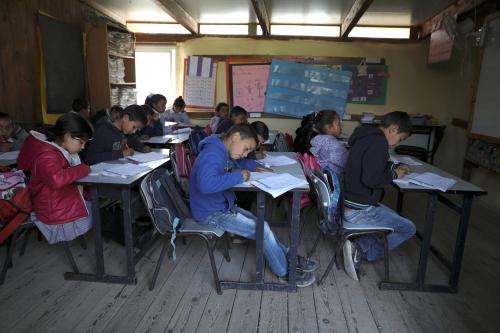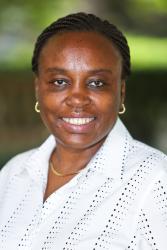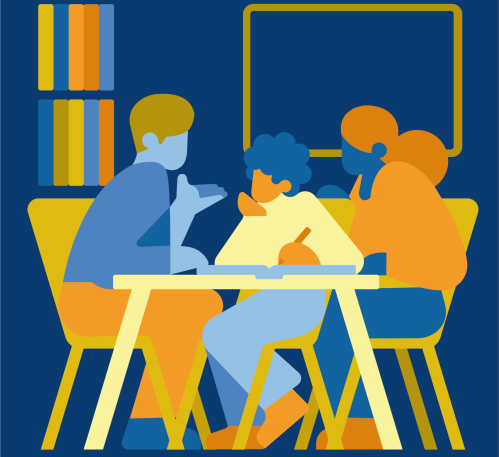This blog is a summary of the Kenya pilot study of the Breadth of Learning Opportunities toolkit, which is available here.
What learning is important for children and youth?
Sustainable Development Goal (SDG) target 4.1 is a commitment by the global community to ensure that every girl and boy complete primary and secondary education by 2030. While achieving this goal is imperative, a pertinent question is “What learning is important for all children and youth?” This was one of the guiding questions for the 30 member organizations that comprised phase one of the Learning Metrics Task Force (LMTF). Seven essential domains of learning were deemed as vital for all children and youth to master in order to succeed in school and life. These domains are: physical well-being; social and emotional; culture and the arts; literacy and communication; learning approaches and cognition; numeracy and mathematics; and science and technology. Unless countries deliberately ensure that these domains are captured in their curriculum and policy documents, education delivered to the children and youth may be narrowly focusing on literacy and numeracy only.
Breadth of Learning Opportunities (BOLO) pilot study in Kenya
In 2017, the Center for Universal Education (CUE) at Brookings and Education International (EI), developed a set of tools (policy tool, school tool, and teacher tool) based on the LMTF seven domains of learning to support countries and other stakeholders in measuring the Breadth of Learning Opportunities (BOLO) students are exposed to, both in the national curriculum and in school practices. CUE and EI piloted the BOLO tools in Kenya and Mexico to ensure the tools were aligned before providing national governments and education stakeholders with a facility to examine their education systems and target interventions associated with a range of learning domains. CUE, EI, and ziziAfrique from Kenya piloted the three tools between May and July 2017. For technical details of the pilot study, you can read the BOLO Technical Report.
The tools are able to map the range of learning opportunities pupils are exposed to, highlight differences between the intended and implemented curriculum, and identify challenges that teachers face while implementing the curriculum. However, the main and important challenge with the tools is that head teachers and teachers had difficulty in identifying the seven LMTF domains within their own practices, as the curriculum is organized in terms of subjects as opposed to domains. Localization of the tools, therefore, becomes imperative.
Intended versus the implemented curriculum
All education systems in the world are created to achieve country-specific goals. The main goal of education in Kenya is to support Vision 2030, the country’s blueprint for economic growth. The intended curriculum, as described in policy documents, is the means by which these education goals are achieved. Whereas the policymakers are clear on the objectives of the curriculum and its delivery at all levels, the same cannot be said for the curriculum implementers who include head teachers, teachers, and officers who supervise curriculum implementation. In many cases, the latter are not aware of the specific competencies that the pupils are meant to demonstrate as their focus is mainly on pupils’ mastery of the content. As a result, there exists a gap between the intended and the implemented curriculum, as demonstrated by the BOLO project. As Kenya shifts from a knowledge-based curriculum to a competency-based curriculum, this is one of the challenges it will have to address.
Other challenges have to do with those that teachers face as they endeavor to deliver a balanced curriculum. These include:
- Teachers often receive little professional support to deliver a balanced curriculum.
- End of cycle exams are usually high stakes and often have consequences for both the teachers and the pupils, forcing teachers to focus on parts of the curriculum that will be assessed while neglecting those that are not examined.
- Many teachers specialize on specific subjects and are unaware of how their subjects link with others to ultimately support pupils to acquire specific competencies.
Conclusion
In many countries, school curriculum is organized by subjects with language, especially the Language of Instruction, numeracy, and sciences. This traditional approach to delivering the curriculum fails to ensure that children and youth acquire 21st century skills like problem solving, collaboration, and critical thinking. Therefore, there is potential for the use of the BOLO tools to help countries identify which opportunities for learning exists, the time and resources allocated to acquisition of specific skills, as well as whether there is alignment between what is intended at the national or regional level and what is implemented in classrooms. Subsequently, the BOLO tools are a good conversation starter for Ministry of Education officers when evaluating the breadth of learning opportunities that learners are exposed to through the implemented curriculum, or when reviewing the curriculum for potential changes.





Commentary
Delivering education in Kenya that addresses the breadth of learning needed to thrive in a changing world
June 8, 2018